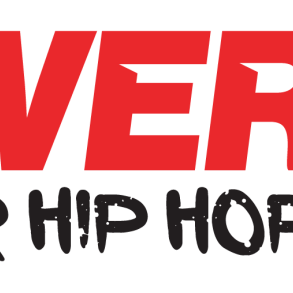 |
| UNIVERSAL HIP HOP MUSEUM |
| Artifacts from hip hop’s cultural roots from the Bronx, New York will be on display as part of the Universal Hip Hop Museum tour stop at Norfolk Hall in Charlotte on Nov. 18. |

If music is the soundtrack of life, chances are it has a hip-hop beat.
The genre, which was born in New York in the 1970s, is the most popular music in the U.S. The Universal Hip Hop Museum Tour will stop at Norfolk Hall (2905 Griffith St.) on Nov. 18 as part of a national excursion to share the genre’s cultural impact. The 52,000-square-foot museum is scheduled to open in 2025 in the Bronx.
“By taking the museum’s exhibition on tour, we’re shining a light on the culture’s regional creative influences, its creators and the communities nationwide that helped give rise to the genre,” said museum executive director Rocky Buccano.
The museum includes rapper DMX’s rhyme book, which specifies the thought process of some of his most memorable songs while he was locked up; turntables of early DJs, such as Pete DJ Jones, DJ Ready Red’s signature fedora from the first ever Geto Boys album; original garments from legendary tailor Dapper Dan and humpty glasses worn by Shock G.
Some artifacts are exclusive to the museum, such as DJ Hurricane’s original afro suit made by April Walker.
Hip hop started as a collaboration of Black and brown community block parties. This is why DJs, such as DJ Kool Herc, are said to be the founders of the genre.
“I’ve been collecting hip hop memorabilia and artifacts since I was a teenager,” said Paradise Grey, the museum’s chief curator. “You know the history is important to me. It’s my history, it’s the history of my very being. To preserve not only my legacy, but the legacy of many other people that I know personally, what better way than then to create a museum to be the official word of the culture.
Grey was born in Little Mountain, North Carolina, but moved to the Bronx when he was 4. Grey’s mother left the South in 1968 to make a better life for her children and didn’t want them dealing with racism or being subjected to low-wage, manual labor all their lives.
Grey remembers how much his mom loved to sing and dance. Every Friday she would bring vinyl records home from a local record store by the dozens. Grey and his siblings would perform together in the living room while she cooked and cleaned. These memories built the foundation of his appreciation for music. He later inherited his mother’s record collection and expanded upon it with items with anything he could get his hands on. He even keeps his Rap Snack wrappers.
Many of the museum’s exhibitions were donated by Gray and partner Pete Nice, also known as Prime Minister Pete Nice of Def Jam Recordings group 3rd Bass. Nice became more involved in the industry as he grew as an artist starting in his first group in high school. His love for the culture grew as he watched the history of hip hop unfold in front of him.
“It’s a good way to show how there’s all these early influences of hip hop and when you look at the larger context you can see how although hip hop was invented and it was a new art form at the time it drew from a lot of things that came before t and a museum is the perfect way to tell that story and show how that happened,” Nice said.
He initially met Grey in 1986 at The Latin Headquarters, the incubator of “The Golden Era of Hip Hop,” where the band Stetsasonic performed. Their hit “Go Brooklyn” got reactions in clubs similar to Meek Mill’s “Dreams and Nightmares” does today.
Nice, like Grey, is honored to extend the legacy of friends he has come to know in the industry over the years. One of his favorite museum artifacts include DJ Kay Slay’s collection, which was donated after his passing. Not only is it cool to show off things like Slay’s crown medallion covered in diamonds and platinum –worth approximately $200,000 – it means a lot to family, friends and fans.
Grammy-nominated artist and North Carolina native Rapsody will host the private preview night in her home state. Rapsody thought she’d go to New York to chase her dreams as an artist but record producer 9th Wonder had other plans. Rapsody grew her platform in Snow Hill, N.C., although her fan base is strongest in New York and Los Angeles.

“I wanted to celebrate women, not only in music, but across the board who I felt like were an extension of me and the women that inspired me when I got in this business,” she said. “I always wanted to set 10 toes on authenticity and being who I was and help widen the door for more women to come through but my thing has always been be your authentic self however that looks.”
Rapsody drew inspiration from hip hop’s female pioneers at an early age, starting with MC Light, followed by Nikki Giovanni, Felicia Rashad, Sister Souljah, and Little Kim. They became her role models not just for their flow but the messages they gave and how they conducted themselves in a male dominant industry.
“The kids need to be taught about the origins of hip hop,” Nice said. “We run into many artists today who don’t even know who Herc is. It’s sad that we haven’t done a good job of teaching history up to this point but that’s why the museum is needed at this point. We’re years into the genre, the culture.”
That is why an educational program has been of top priority to the museum. Many of the interactive experiences will include classes for the betterment of aspiring artists. A Private contribution from Microsoft was put into place in collaboration with rapper Ice T.
Flow Scholar is AI program where kids can learn to rhyme and basic song structure. There is also speak of a portion of the exhibition being dedicated to producers, allowing themselves to be fully immersed in the beat making process in a studio setting.
According to Grey, the foundational elements of hip hop started long before 1973 and it didn’t necessarily take place in the Bronx. Breakdancing, also known as b-boying, is the evolution of Americanized African dancing. Graffiti stems from Egyptian writing and DJing dates to West Africa’s djembe drums .
“There’s no such thing as hip hop,” Grey said. “Hip hop is black culture. Hip hop is the unified repository of worldwide Afro indigenous cultures, and we save and sample the best of everything, so the best samples we’ll take that. I don’t care if the drumbeat is jazz, R&B, gospel, classical, reggae; if we hear a beat and we like it, we’re snatching it. Rock ‘n Roll, that’s hip hop. Whatever we say is hip hop is hip hop.”
Comments
This post was originally published on this site be sure to check out more of their content.





